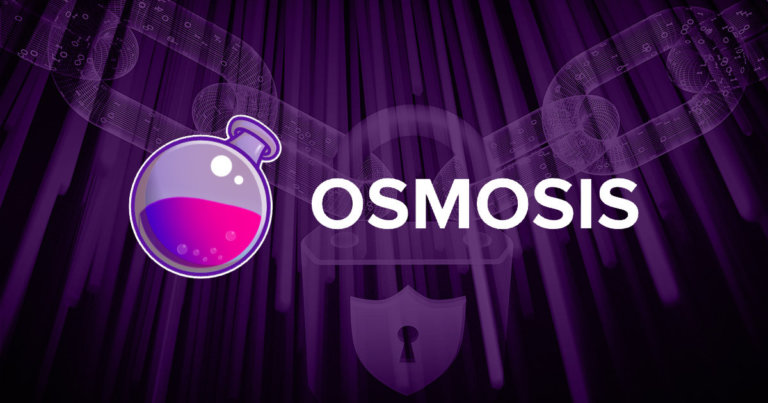 Cosmos-based DEX Osmosis breaks above $1 billion in locked value
Cosmos-based DEX Osmosis breaks above $1 billion in locked value Cosmos-based DEX Osmosis breaks above $1 billion in locked value
Decentralized exchange Osmosis has set three personal all-time records in just one day.

Cover art/illustration via CryptoSlate. Image includes combined content which may include AI-generated content.
The total value locked (TVL) on decentralized exchange (DEX) Osmosis, which is part of the Cosmos (ATOM) ecosystem, surpassed $1 billion today, according to decentralized finance metrics platform DeFi Llama.
This comes as a result of rapid growth the DEX has been seeing over the past seven days. At press time, the TVL on Osmosis grew by 7.77% in 24 hours and by 33.74% over the week.
🥇An historic triple record day for @osmosiszone 🧪
🟣 $OSMO ATH at $7.75
🟣 +$95M daily volume, ATH
🟣 +$1,000,000,000 TVL (ONE BILLION $), ATH🤯Entire @cosmos ecosystem ready to blow up 🚀
Data: https://t.co/N4EaQPWZ5P$OSMO $ATOM #IBCGang #1billion pic.twitter.com/ysWnoxGPQf
— Imperator.co (@imperator_co) January 4, 2022
However, this doesn’t necessarily mean that Osmosis is seeing a massive influx of new funds. The way TVL works, it can be increased in two manners: either users pump additional tokens into the platform or the price of already locked assets grows.
At the same, Osmosis has also set a new personal record in terms of daily trading volume, reaching $95.5 million in 24 hours, while its governance token OSMO has hit a new all-time high of $7.84.
What is Osmosis?
Osmosis is an automated market maker—akin to Ethereum’s Uniswap or Binance Smart Chain’s PancakeSwap—that enables trading (swapping) of various tokens via user-provided liquidity pools. In other words, the platform helps to facilitate trading without any centralized intermediaries.
The DEX is based on its own proof-of-stake (PoS) blockchain protocol which, in turn, was developed using the Tendermint engine—a core component of the Cosmos ecosystem. Osmosis also allows other networks to interconnect via the Inter-Blockchain Communication protocol (IBC).
In its turn, TVL is a metric that represents the current combined price of all tokens that are locked on any given platform. When it comes to PoS DEXs, it usually comprises assets that users choose to either stake (and assist in maintaining the network) or lock up in liquidity pools (to help facilitate trading).
Have your stake and pool it too
Stakers and liquidity providers receive passive yields on their holdings and usually have to choose between one of those two options—but that’s not the case with Osmosis.
This is because the DEX pioneered the so-called “superfluid staking” feature that allows holders of OSMO to stake and provide liquidity simultaneously and without any network trade-offs.
Superfluid
Osmosis is all about fluids and LIQUIDity ⚗️
Also, the name is inspired by this foundational piece that @delitzer wrote a few years agohttps://t.co/BLthd6hNUs
— Sunny Aggarwal 🧪 (@sunnya97) July 10, 2021
Notably, the DEX’s rapid growth comes on the heels of a $21 million token sale that the Osmosis Foundation closed on October 21.
“Osmosis is our first AMM investment outside of the Ethereum ecosystem,” noted Charlie Noyes, investment partner at Paradigm, at the time.
“The launch of IBC, Cosmos’ cross-chain interoperability protocol, kicked off a Cambrian explosion of developer activity and experimentation. Osmosis is the natural center of gravity for liquidity in Cosmos’ emerging DeFi ecosystem.”
The fundraising was led by Paradigm with participation from Robot Ventures, Nascent, Ethereal, Figment, and Do Kwon, CEO of Terraform Labs.









































































































